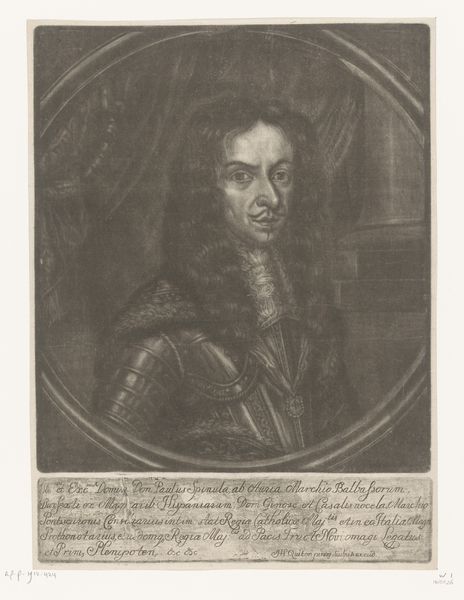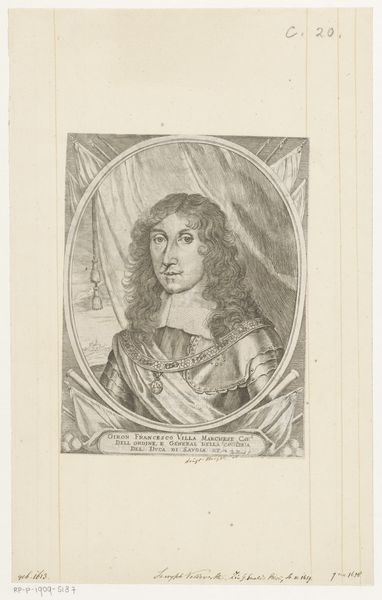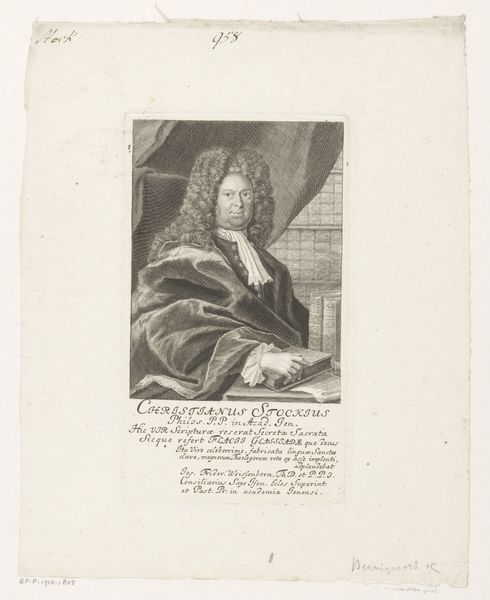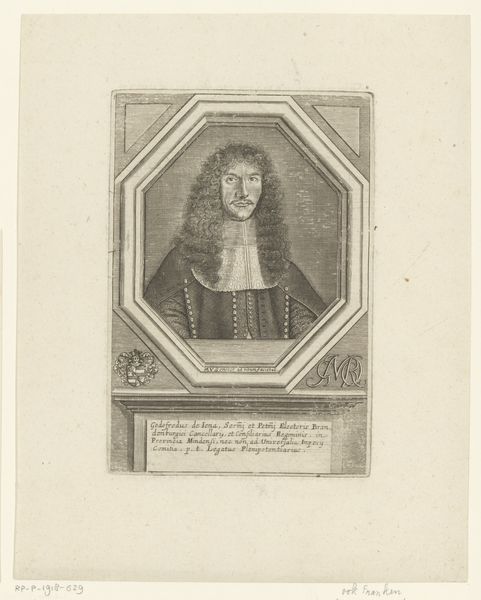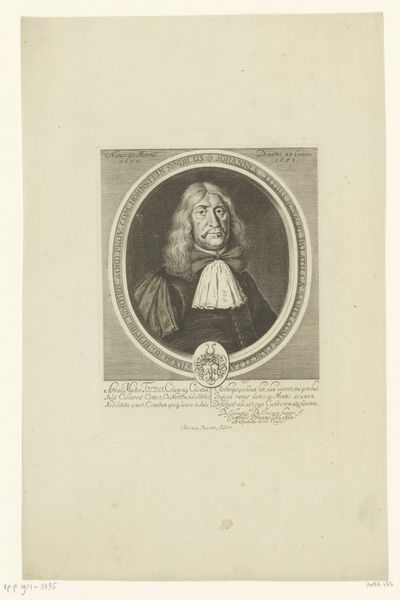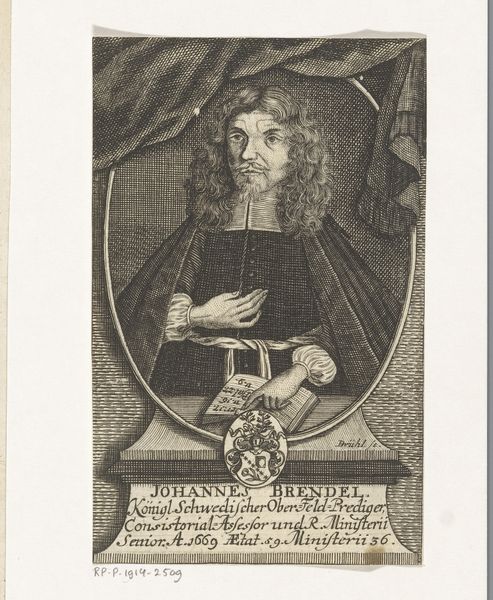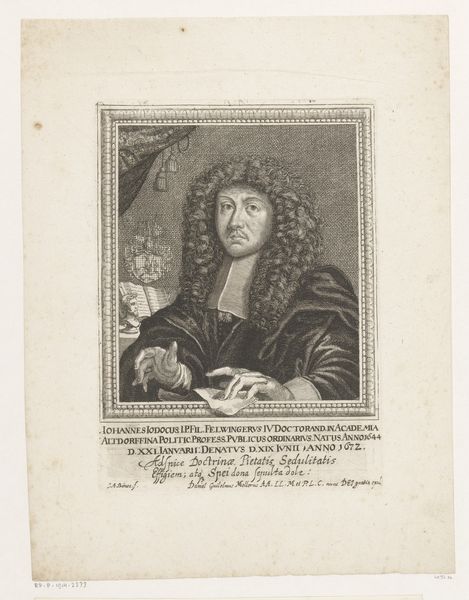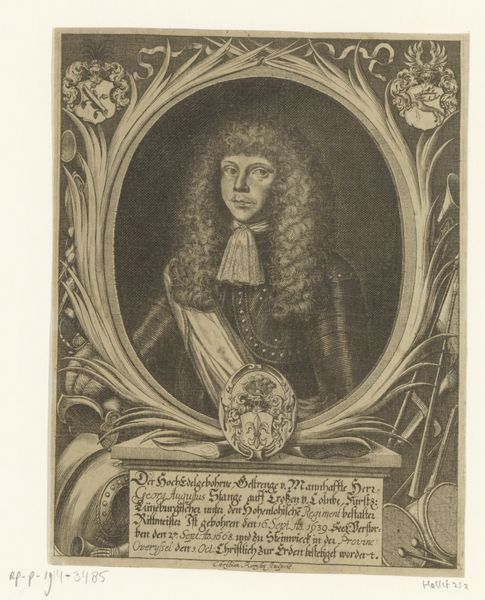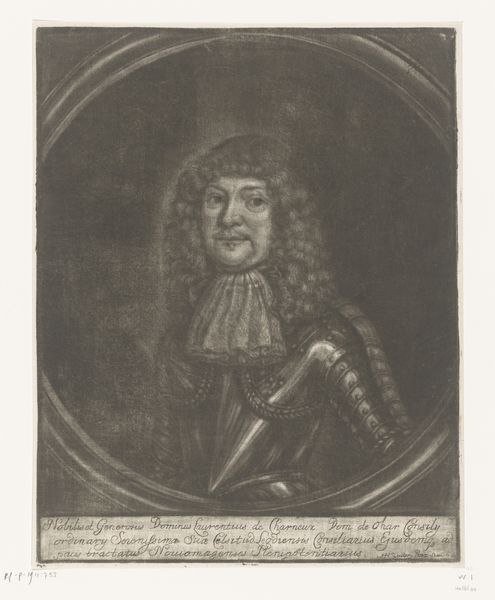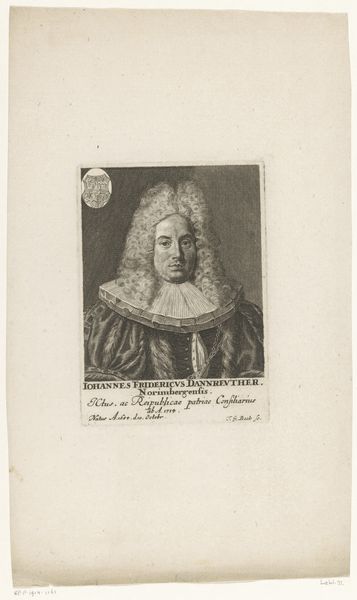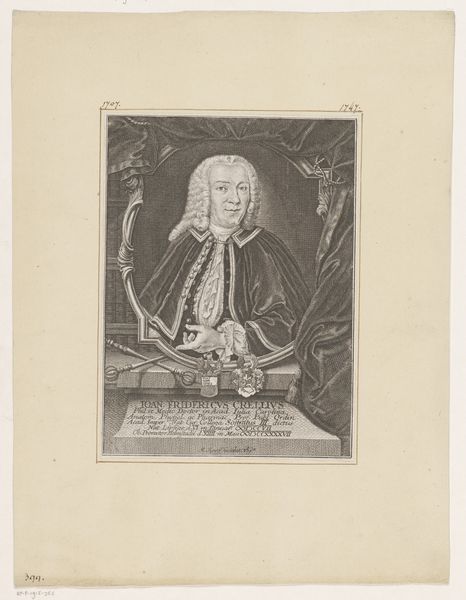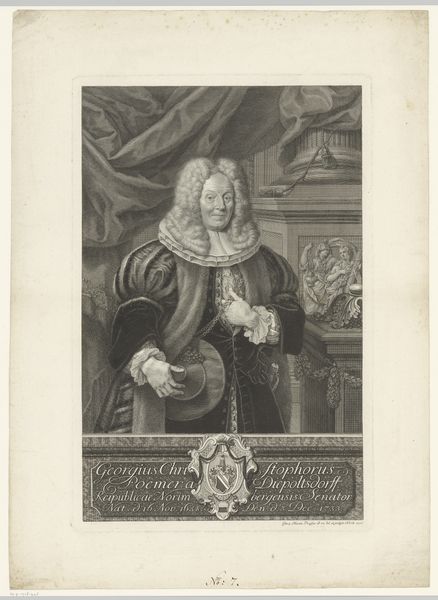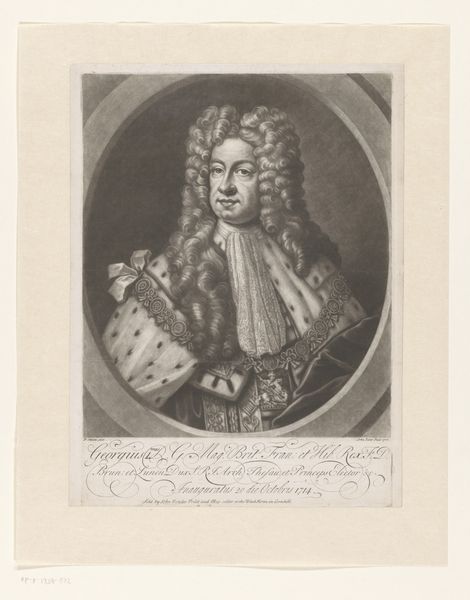
engraving
#
portrait
#
baroque
#
history-painting
#
engraving
#
realism
Dimensions: height 182 mm, width 131 mm
Copyright: Rijks Museum: Open Domain
Georg Fennitzer created this portrait of Andreas Scharmann as an engraving. While Fennitzer’s dates aren’t known for certain, he would have been working in the late 17th century in the German lands. This portrait offers us a window into the social values of the era. Scharmann, identified in the inscription as a doctor, is shown in a manner that emphasizes his status and learning. The rose he holds might be symbolic of his profession, an emblem of health and healing. The family crest in the background speaks to his lineage and social standing. Engravings like this played a key role in disseminating images and ideas across Europe. They were often commissioned by the sitter, or their family, as a way of celebrating their accomplishments and preserving their memory, especially when photography was not invented yet. They could be shared amongst a wide circle, reinforcing social networks and hierarchies. By studying these kinds of images, alongside other historical sources, we can gain a deeper understanding of the social and cultural world of early modern Europe.
Comments
No comments
Be the first to comment and join the conversation on the ultimate creative platform.
